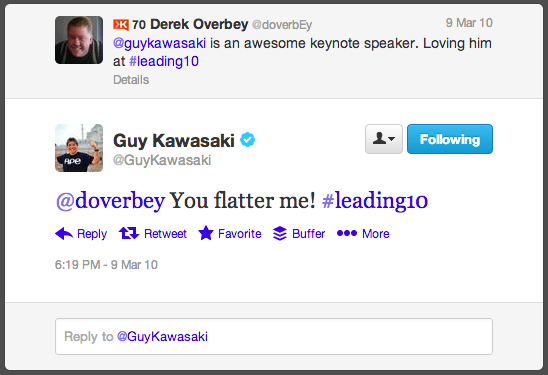
Social Media & Communities: Is There a Right or Wrong Way?
There are two distinct approaches that most people and companies take with their social media community efforts.
The first approach is to look at the numbers. The more people you get in the funnel (or in this case, the number of Facebook Page “Likes,” or Twitter followers), the better chance you have to “market” your products or services to them. This in turn provides a higher chance to sell your products or services.
The other approach is about nurturing. Nurture focuses more on social engagement (seen on walls, boards and/or streams), rather than focusing on the number of fans, “Likes” or followers. The logic is, if you make your existing and potential customers feel as if they’re a part of something bigger, you have the opportunity to build something special, and the community you’ve built will work for you.
While attending the New Media Expo last month, Mari Smith, the energetic Scottish dynamo author and entrepreneur, and Guy Kawasaki, best known as the former chief evangelist of Apple, championed both approaches. While both are marketers through and through, they approach their audiences or communities quite differently.
Kawasaki looks at his 4 million+ fan and follower base as a marketing channel. He takes what he calls an “NPR attitude,” and provides an abundant amount of content to his followers 365 days a year, mostly pitch free.
For providing all of this great content with his channel, Kawasaki occasionally promotes his wares (mostly books) a couple of times during the year. This has been a consistent theme that has worked for Kawasaki for years. In fact, when I interviewed Guy at SXSW in 2009, he wasn’t shy about how he leverages social in his business.
Smith on the other hand, likes to take a “relationships first” approach. Instead of putting her business at the forefront, she focuses on her relationships, which she’s very passionate about. Everything Smith does revolves around people and relationships, whether it’s cultivating fresh ones, building and preserving existing ones, or being a conduit to helping others connect.
Although this approach can be more time consuming, it’s working well for Mari. She currently has 183,000 followers on Twitter, 88,000 likes on her Facebook Page and 388,000 followers on her personal Facebook profile.
While both styles are effective for their respective users, there are two differences between Mari and Guy’s methods: interaction and advocacy.
While Guy puts out a ton of great content, his level of interaction is slim-to-none, (which wasn’t always the case), but that also comes with the territory when you have as many followers as he does. Do you think Guy’s community would be even more vibrant if he responded? Here’s a reply I got from Guy back in 2010, though, I’m not sure if this was actually from Guy or from those who tweet for him. He’s also not shy about telling folks that others tweet for him:
While Mari delivers a ton of great content herself, her level of interaction is through the roof. This is the biggest impact between the two methodologies, which small businesses may benefit from.
Mari’s interaction builds loyalty and advocates (by sharing ideas, products and services with their connections) and in turn, builds a true community. People are part of something unique when they receive a response, and they tend to care more deeply about the subject matter being discussed with a response.
Everyone should take a chapter out of Mari’s book, and use interaction to build a community that’ll work for us. It may be more challenging, but the benefits far outreach the blood, sweat and tears.
Which approach do you think works best for you, Mari or Guy’s?
© 2013 – 2018, Contributing Author. All rights reserved.




